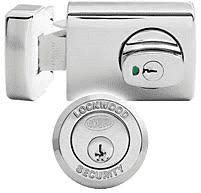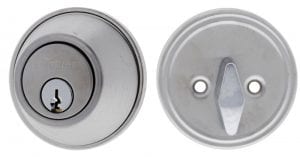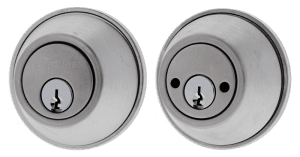Choosing the right lock for your unique situation can be overwhelming.
This guide should help you understand the options available, and steer you in the right direction.
PADLOCKS
General purpose padlocks are suitable for low security uses such as school lockers, small tool boxes and other indoor uses.
Pro- cheap, readily available, compact size, basic deterrent.
Con- thin shackles are easy to cut, small lock bodies are easy to break, easily bypassed, not weather proof, can’t be rekeyed
Heavy duty padlocks are suitable for medium security uses such as gates, sheds, bikes and many more ourdoor uses.
Pro- thicker high strength shackles of different lengths, available with shrouded shackles, weather resistant, can be rekeyed, can be keyed to existing key, can be keyed to restricted systems, can’t be bypassed and harder to pick.
Con- can be expensive, bulky size.
High security padlocks are suitable for use on shipping containers, garages, and anywhere that requires the highest level of protection.
Pro- highest security level, thicker high strength shackles of different lengths, available with shrouded shackles, weather resistant, can be rekeyed, can be keyed to existing key, can be keyed to restricted systems, can’t be bypassed and harder to pick.
Con- expensive, bulky size.
KNOBS AND LEVERS
A knob or lever passage set has no locking function at all and allows free entry or exit at all times.
Suitable for bedrooms and passage-way doors.
A knob or lever privacy set can be locked from the inside by pushing the lock button or twisting the turnsnib.
It can be unlocked from the inside by turning the snib or in some models, by simply turning the handle.
This type of lock can be opened from the outside in an emergency using a coin or screwdriver in the slot on the front of the lock.
Suitable for bedrooms, bathrooms and toilets.
A knob or lever entrance set can be locked from the inside by pushing the lock button or twisting the turnsnib.
It can be unlocked from the inside by turning the snib or in some models, by simply turning the handle.
This type of lock can be opened from the outside using the correct key.
Suitable for entrances, offices etc.
DEADLOCK, DEADLATCH, DEADBOLT
These locks are locked and unlocked from the outs ide using the key and can be unlocked from the inside by turning the knob.
ide using the key and can be unlocked from the inside by turning the knob.
They can be deadlocked by using the key on the inside knob, then when leaving, the key is used
on the outside to lock the door.
Pro- can’t lock yourself out as key is needed to lock the door
Very strong hooks prevent door from being jimmied open
Very reliable and secure design
Con- No latching function (holding the door shut without locking)
Needs knob or lever passage set to hold door closed without locking.
 Deadlatch locks are one of the most common locks on the Australian market.
Deadlatch locks are one of the most common locks on the Australian market.
The most popular of these is Lockwood’s 001.
The 001 has been around for a very long time and still sets the benchmark for deadlatches.
Deadlatches have a large strong latch that locks into the strike mounted on the door frame when closed, and a small auxiliary latch that is pushed back into the lock body, this prevents the main latch from being pushed out of the strike by things like credit cards.
They are unlocked from the outside using the key and from the inside by turning the knob.
They can be easily deadlocked by inserting the key into the inside knob and turning.
The lock is now deadlocked, and a key is required to open the lock from either side.
The Lockwood 001 has a great feature that unlocks the inside knob when you open the door from the outside.
This eliminates the chance of being locked inside your own home.
Older models do not have this feature and this has happened in the past.
They are available for timber or steel frames and also for outward opening doors.
Pro- Self locking just by pulling the door shut, only need 1 lock on the door (provides latching and locking functions)
Easy to unlock, turn key in either direction then push door open, very reliable and secure design
Can be deadlocked using key from inside, then pull door shut when exiting.
Con- Always need key to open from outside (no passage function)
Easy to lock yourself outside.


Deadbolts come in single and double cylinder versions.
Single cylinder deadbolts have a round lock body on the outside of the door only and on the
inside, they have a thumb turn that locks and unlocks the deadbolt at anytime.
Note: For insurance purposes, this type of lock is not considered a deadlock as the key is not
needed to unlock the door from the inside.
Double cylinder deadbolts have similar looking round lock bodies on both sides of the door.
The key must be used to lock and unlock the bolt at all times from either side of the door.
Either type requires the installation of a knob or lever set to provide latching function and
locking when the premises is occupied.
Pros: Double cylinder versions provide good security and deadlocking functions
Can’t lock yourself out as key is needed to lock door
Good quality models are resistant to many attacks
Cons: No latching function (holding the door shut without locking)
Needs knob or lever set for latching
Can only be opened with a key so must be left unlocked when premises is occupied to allow
fast exit in case of fire

